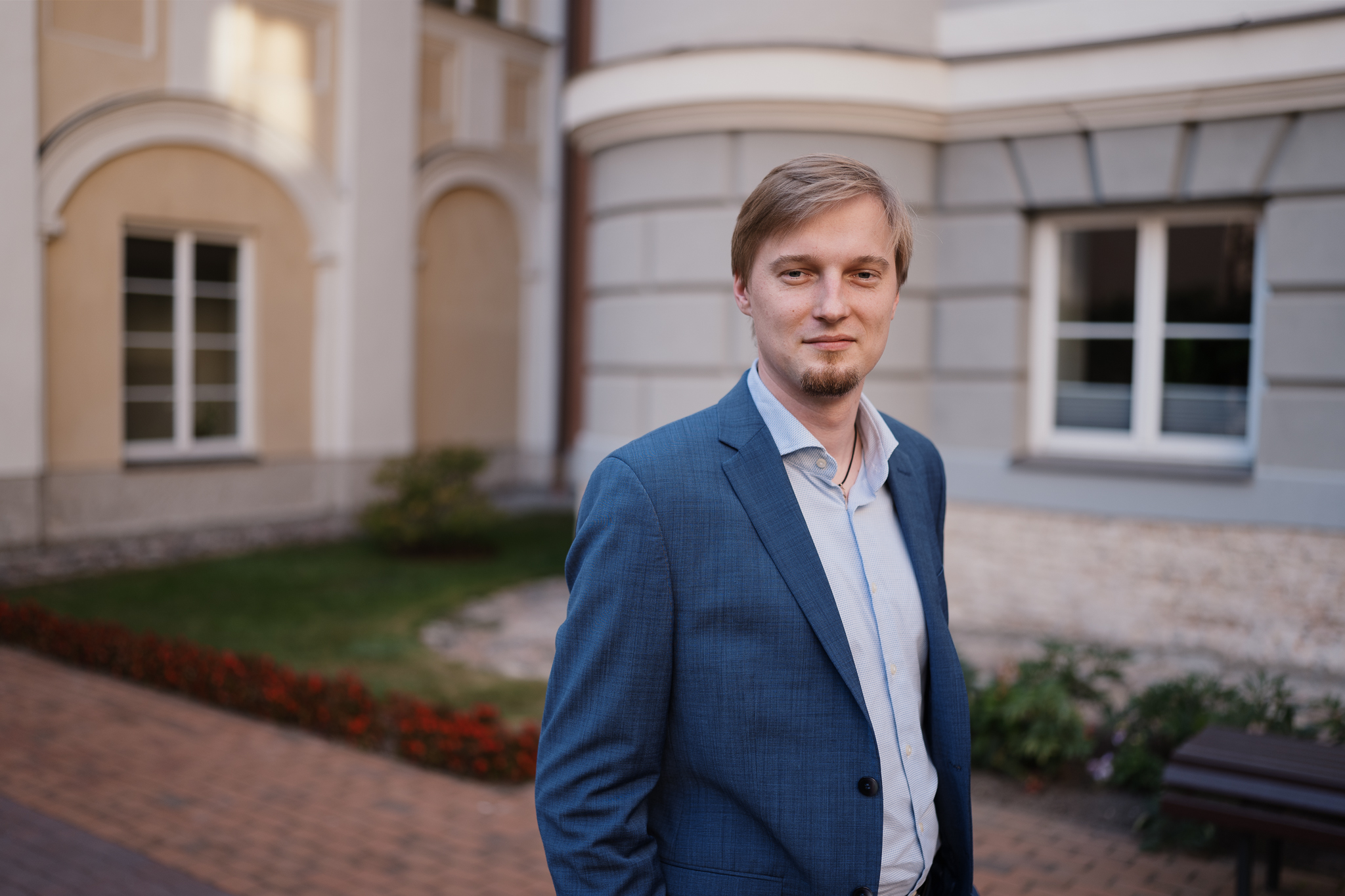Physicist Dr. Laurynas Dagys' Research Paves the Way for Efficient Disease Diagnosis and Compact Magnetic Resonance Devices
 Vilnius University physicist Dr. Laurynas Dagys with a team of international scientists has introduced a new practical solution that could advance the fields where magnetic resonance is applied today. They investigate and employ a technique called hyperpolarization which considerably enhances sensitivity of conventional methods. Published in the prestigious scientific journal Science Advances, this study eases the way to more efficient disease diagnostics and smaller, cheaper, and more accessible devices.
Vilnius University physicist Dr. Laurynas Dagys with a team of international scientists has introduced a new practical solution that could advance the fields where magnetic resonance is applied today. They investigate and employ a technique called hyperpolarization which considerably enhances sensitivity of conventional methods. Published in the prestigious scientific journal Science Advances, this study eases the way to more efficient disease diagnostics and smaller, cheaper, and more accessible devices.
Towards More Effective Disease Diagnostics
According to Dr. Dagys, good contrast or high sensitivity is essential in magnetic resonance imaging and spectroscopy: "The stronger the nuclear magnetic resonance signal, the better the contrast and sensitivity. A strong signal is obtained in a powerful magnet and that is why magnetic resonance devices are so large and expensive."
The hyperpolarization method employed by the scientists allows for an external increase in signal intensity without the need of a strong magnet. "The intensity increases by orders of magnitude due to externally boosted nuclear polarization. It’s like making a light bulb shine thousands of times brighter," explained Dr. Dagys.
Solving a Practical Problem
According to Dr. Dagys polarization in optics as well as in magnetic resonance is associated with order: "The more nuclear magnetic dipoles are oriented in the same direction, the greater the overall order and polarization. For example, souvenir magnets stick to refrigerator due to the partial order among electron magnetic dipoles; without this order, the magnets would simply fall off. The same principle applies to nuclei — the greater the order or polarization, the stronger their interaction and their magnetic resonance signal."
He noted that the signal is proportional to sample concentration as well, so achieving both high polarization and high concentration is ideal. However, scientists so far dealt with a limit when "achieving both may be impossible because densely and well oriented magnetic dipoles interfere with each other. Our international team demonstrated that this adverse interaction between nuclei can be decoupled by applying a suitable method and then hyperpolarization efficiency can be restored."
The researchers worked on solving this practical problem for more than two years. "Both theoreticians and experimentalists collaborated to fix our method efficiency in highly concentrated solutions. Every team member's contribution was crucial — some worked on practical implementation, while others participated in discussions which also required few separate trips. Personally, this team experience was very memorable. We realized that we likely saved other researchers’ time in trying to enhance contrast or sensitivity using similar hyperpolarization principles," said Dr. Dagys.
Smaller, Affordable, and faster Devices
Dr. Dagys emphasized that the findings of this study are potentially relevant for materials science and the future of medicine. Hyperpolarization techniques allows enhanced sensitivity which reduces research time and helps to develop smaller and more accessible magnetic resonance equipment.
The most attention these systems are gaining in oncology for developing a new type of contrast for cancer.
"This contrast indicates not just structural changes in tissues but also metabolic imbalances that occur at cellular level in diseased areas. By locally monitoring metabolic pathways, doctors can diagnose these diseases and adjust necessary treatments much faster. Devices producing this new contrast are already commercially available, and their technology continues to improve," he explained.
Dr. Dagys specializes in nuclear magnetic resonance spectroscopy, covering both fundamental phenomena and practical applications in materials science and medical diagnostics. He is one of the young scientists who won the Vilnius University Foundation’s 2024 competition for scientific research funding. He studied physics and natural sciences at Vilnius University, interned at Darmstadt University of Technology, Johannes Gutenberg University, the Max Planck Institute in Göttingen, the University of California, Southampton University in the UK, and worked at NVision Imaging Technologies, a German company developing clinical polarizer systems. In 2021, he was awarded the Helmholtz Association's Erwin Schrödinger Prize.